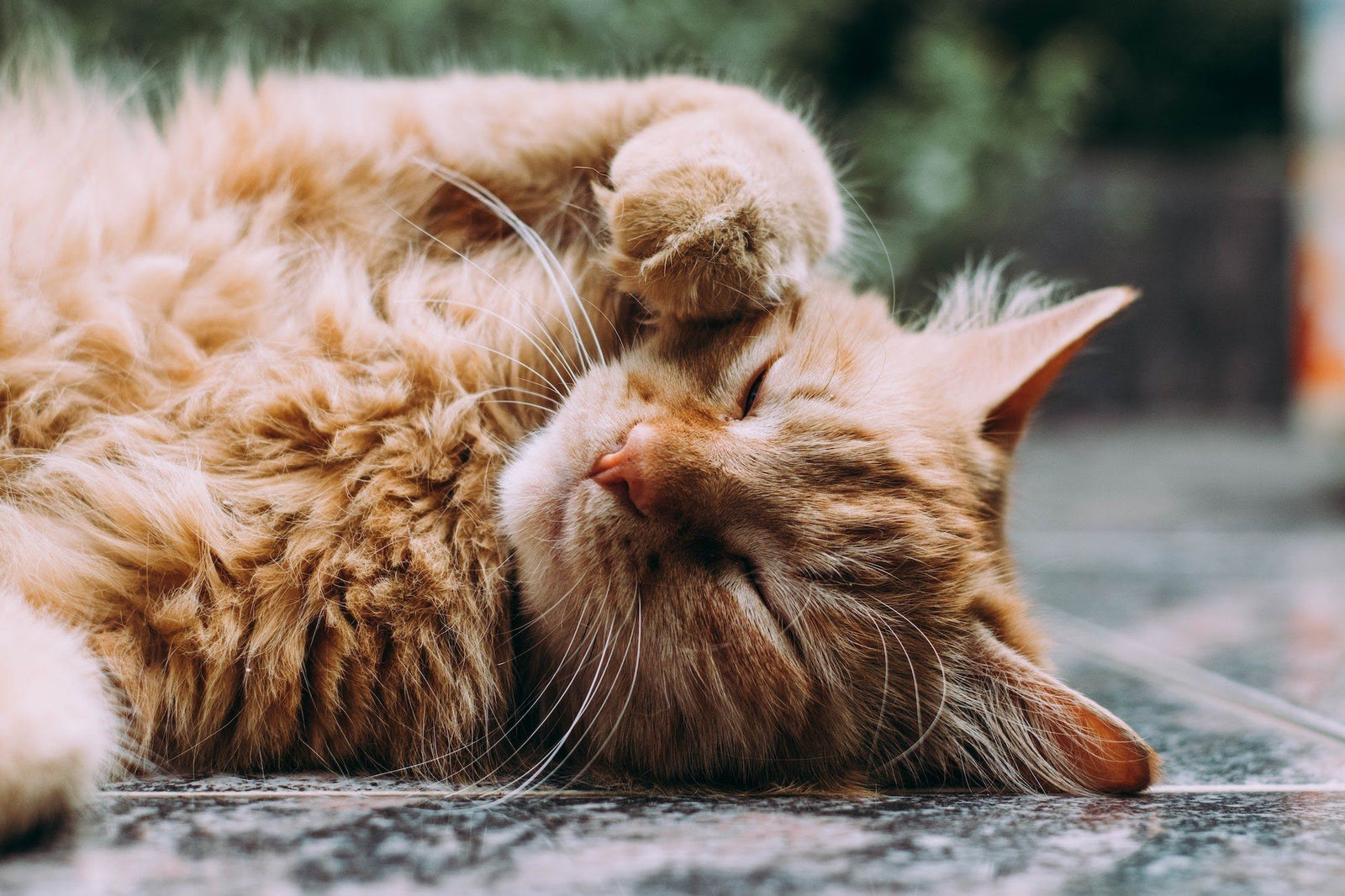
Ok, first and foremost, let’s get something straight about cats and their weight – all cats are beautiful no matter what shape or size. I think we can all agree on that. Our cats love to eat, and we love to give them the world. How, as a cat owner, are you not supposed to shower them with all the treats when they absolutely deserve it?
It can be easy to overdo it with the cat treats every once in a while, so it’s important to learn what a healthy cat weight is for your furry friend. That way you know when it’s time to stop with the cat treats, and start with the healthy habits and cat exercise. The good news is, monitoring your cat’s weight and keeping them in good shape for pet obesity prevention doesn’t have to be tedious.
If you find yourself wondering, “do I have an overweight cat?” you’re not alone – this is a valid question. Just like humans, a cat's weight can fluctuate, too. And if you’re a new cat owner, it might take a little trial and error to get their eating schedule and diet right to ensure the ideal body weight. As usual, there is no need to worry because PrettyLitter has got your back with the cat facts!
Tired of your home smelling like you have a cat?
15% off PrettyLitter
Try it today Use code: PRETTYBLOG
To find out if you have an overweight cat, read below to get some clarity.
Generally, your full-grown domestic cat should have a healthy weight of around 10 pounds. However, this can vary depending on the type of cat you have. For example, a domestic cat can weigh about 8-10 pounds, a Persian cat can be anywhere between 7 to 12 pounds, a Siamese cat can be 5 to 10 pounds, and a Main Coon can be anywhere from a 10 to a whopping 25 pounds!
A general rule of thumb when checking your cat’s weight is that you should be able to see an hourglass-like figure and you should be able to feel your cat’s ribs but not see them. So the next time you’re having a cuddle session with your cat, give them a little tummy pat and check to ensure they’re doing alright in the weight department. And before you assess their weight, make sure they’re calm and collected. If you’re really good, they probably won’t even notice you’re giving them a check-up!
When checking your cat’s body weight, you should be checking a few different spots:
- Ribs
- Tailbase
- Side view
- Overhead view
Ribs
Start with looking at and feeling the cat’s ribs. Ideally when you’re feeling your cat’s ribs, you should be able to feel them with aslight fat cover on them. This is about 16-25% body fat, and it’s perfect!
If you feel their ribs and it is easily felt with no fat cover they are likely underweight.
And, if you find it difficult to feel their ribs under a fat cover, they are likely overweight.

Tailbase
When taking a look at your cat’s tailbase, you should see some sort of contour (almost like a bottle shape). There should be a slight curve with a slight fat cover.
If you notice that their bones are raised and there is little to no fat cover, this means that they are likely underweight. 5-15% body fat is considered underweight. If you see that your cat’s tailbase is thick and difficult to feel under their fat cover, they’re overweight. You can also tell if they have a rounder shape towards their tail.
Sideview
When you’re looking at your cat from the side, you should notice a slight abdominal tuck, this is good! If you notice that their belly, or tuck, is small and severely tucked, they are underweight. If you notice their belly hanging a little further and it does not tuck, they are overweight.
Overhead
The overhead view of your kitty can be very telling of their weight. If they have an ideal healthy weight you should be able to see the curves of your cat, without seeing any bones pop out. However if they have a rounder, less pronounced shape, they are likely overweight.
There is no shame in your tubby cat’s game. So if you suspect that your cat is over or underweight, take them to the vet and see what you can change in your cat’s diet or lifestyle to get them to a normal weight. It’s important to get this done ASAP because your cat could have an underlying condition, food allergy, or inflammatory bowel disease that is preventing them from gaining or losing weight.
Oh, and while you’re out there being a great cat parent and taking care of your cat’s weight, make sure to check out the other ways you can care for your cat! You might notice your cat is itching a bit, or sneezing and coughing. As always, if you have concerns about your cat’s health, consult a vet as soon as you can. But in the meantime, PrettyLitter can be a source of ease and information!


Follow Us